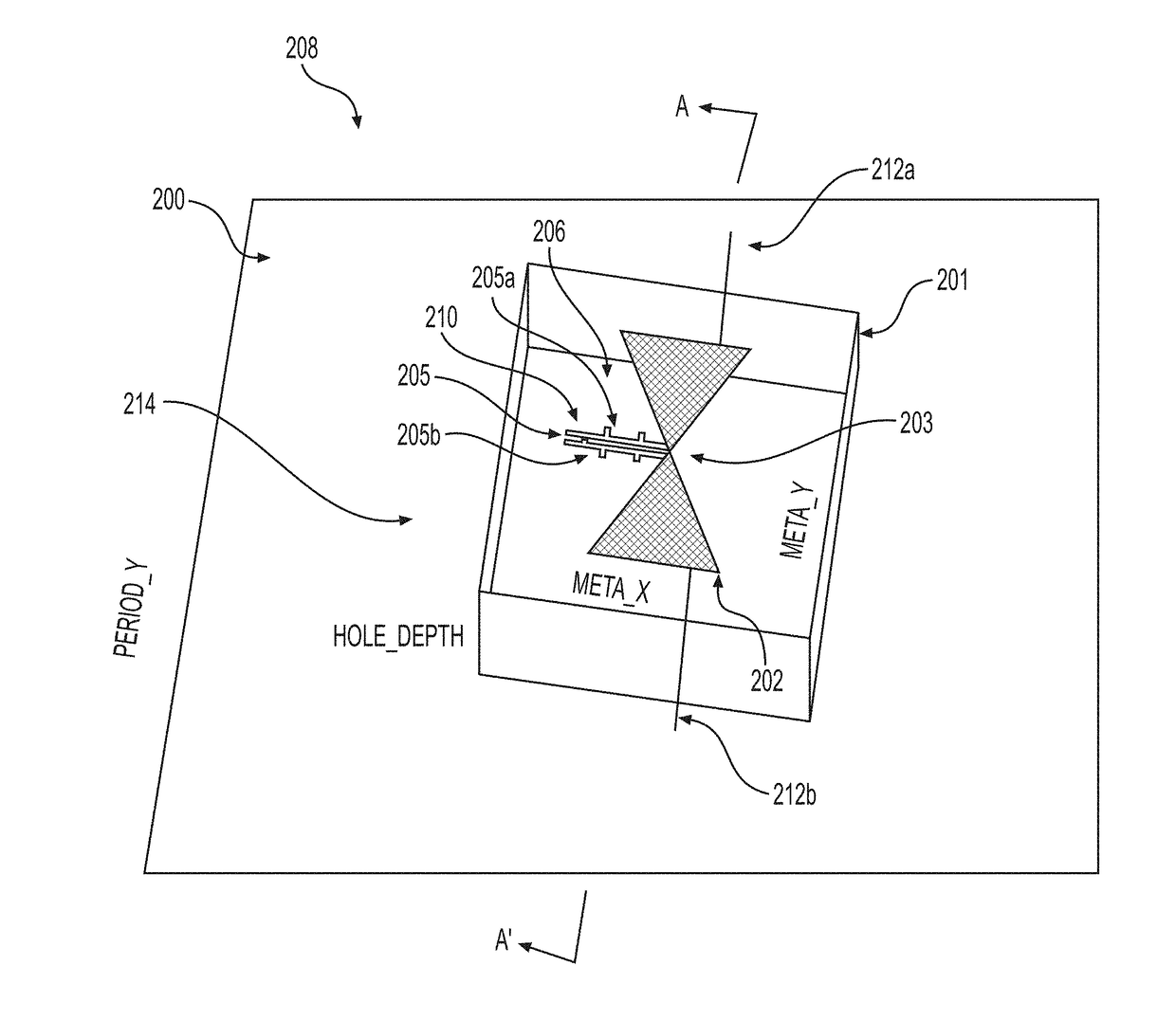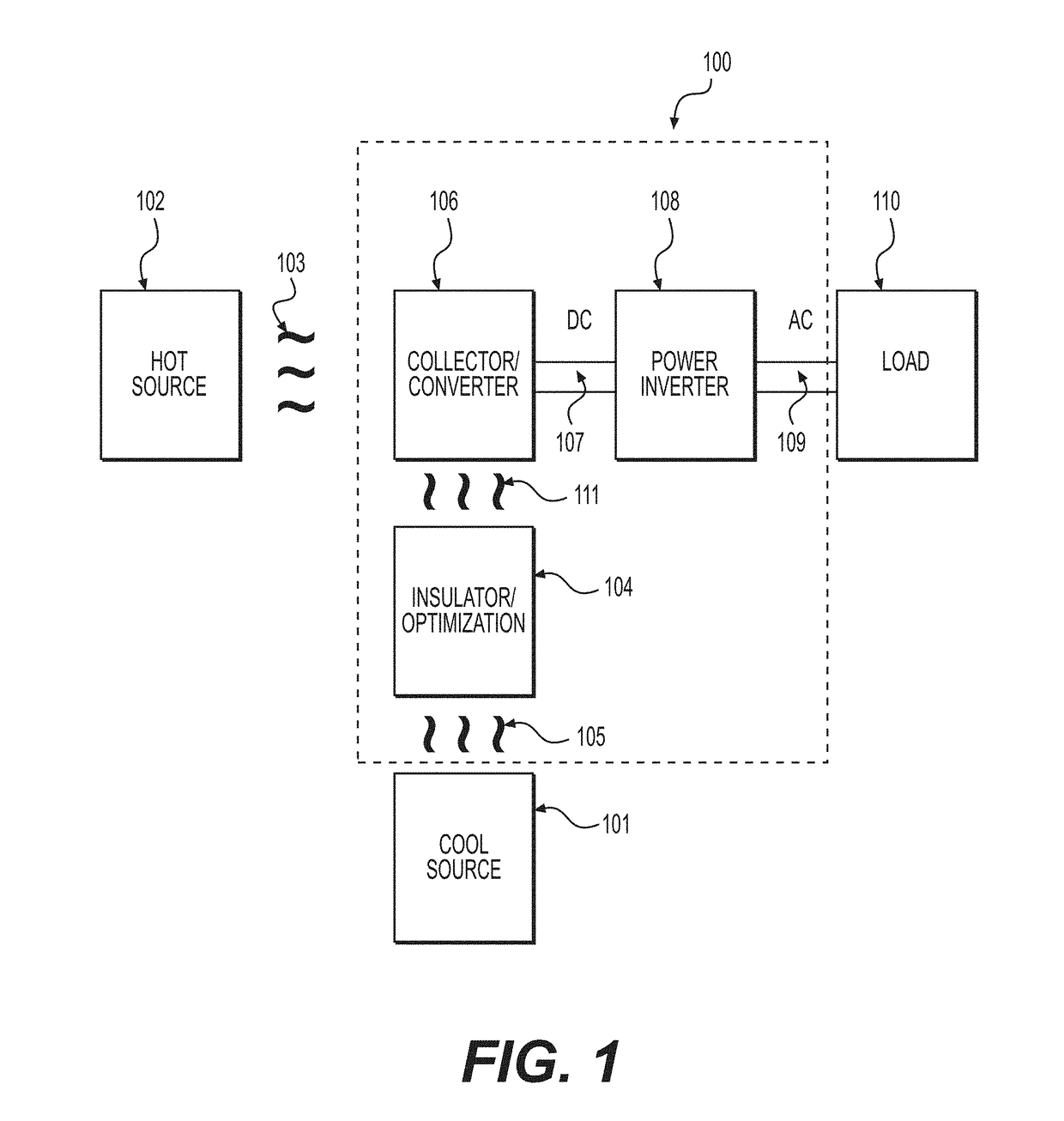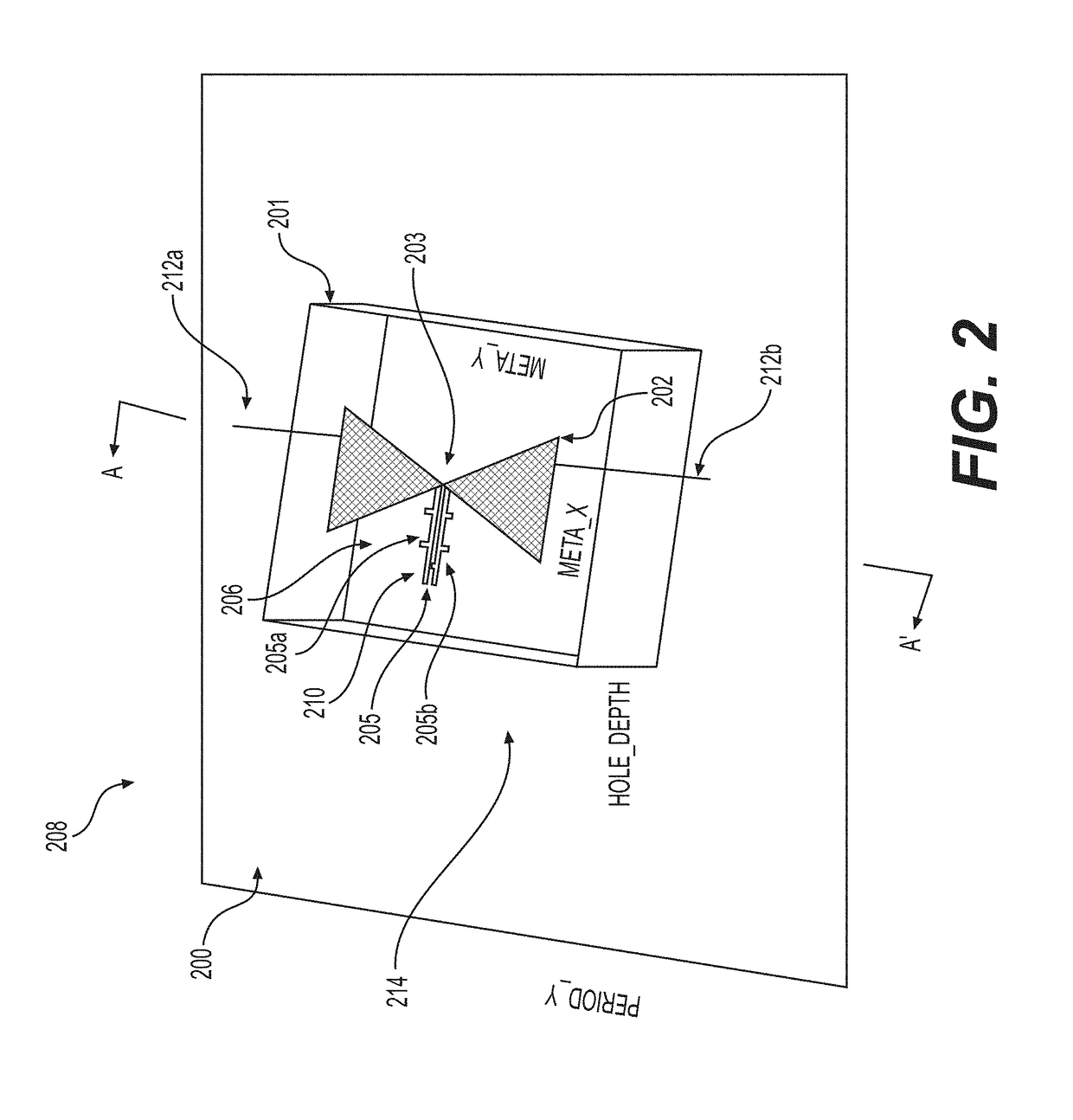Structures, system and method for converting electromagnetic radiation to electrical energy using metamaterials, rectennas and compensation structures
a technology of electromagnetic radiation and metamaterials, applied in the structure of radiating elements, resonant antennas, antenna earthings, etc., can solve the problems of inefficient conversion process used in these plants, high cost of conventional turbine-based solutions for generating electricity from heat, and inefficient production of heat, so as to achieve better operation points and more efficient power harvesting
- Summary
- Abstract
- Description
- Claims
- Application Information
AI Technical Summary
Benefits of technology
Problems solved by technology
Method used
Image
Examples
Embodiment Construction
[0072]The following description is presented to enable one of ordinary skill in the art to make and use the invention and is provided in the context of a patent application and its requirements. Various modifications to the described embodiments will be readily apparent to those skilled in the art and the generic principles herein may be applied to other embodiments. Thus, the present invention is not intended to be limited to the embodiments shown but is to be accorded the widest scope consistent with the principles and features described herein.
[0073]FIG. 1 is a schematic diagram of a system 100 for harvesting energy from a heat source 102 and supplying the generated electricity to a load 110. A collector / converter device 106 collects heat 103 provided by heat source 102 and converts that heat to direct current (DC). In embodiments, the DC is converted to alternating current (AC) by coupling collector / inverter 106 to a power inverter 108 over a bus 107. The generated AC can then b...
PUM
 Login to View More
Login to View More Abstract
Description
Claims
Application Information
 Login to View More
Login to View More - R&D
- Intellectual Property
- Life Sciences
- Materials
- Tech Scout
- Unparalleled Data Quality
- Higher Quality Content
- 60% Fewer Hallucinations
Browse by: Latest US Patents, China's latest patents, Technical Efficacy Thesaurus, Application Domain, Technology Topic, Popular Technical Reports.
© 2025 PatSnap. All rights reserved.Legal|Privacy policy|Modern Slavery Act Transparency Statement|Sitemap|About US| Contact US: help@patsnap.com



